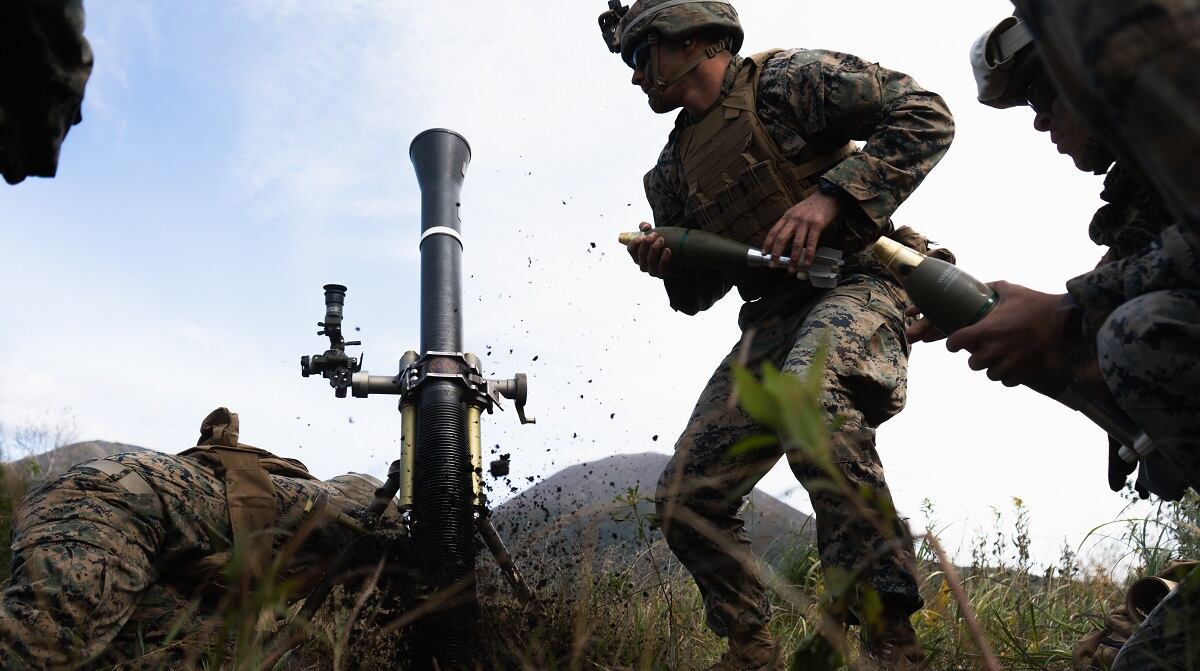MOSUL, Iraq — With their control of Mosul slipping away, Islamic State militants decided to send a message of defiance: They blew up the 12th century al-Nuri Mosque, along with its famous leaning minaret.
The mosque, destroyed Wednesday night, would have been a symbolic prize in the fight for Iraq's second-largest city. It was from a pulpit in that mosque that the extremists' leader, Abu Bakr al-Baghdadi, declared a caliphate in the lands they had seized in Iraq and Syria in July 2014.
According to Iraqi officials, the destruction of the landmarks indicated that ISIS defenses are crumbling and the campaign to retake Mosul — launched more than eight months ago — is in its final stages.
"They knew that the battle had been decided in favor of the Iraqi forces and they knew that we were going to enter the mosque in only a few hours," said Iraqi special forces Lt. Gen. Abdul-Wahab al-Saadi, adding that his troops were only 50 meters (yards) from the mosque site.
"That's why they exploded it," he said.
Prime Minister Haider al-Abadi tweeted early Thursday that the mosque's destruction was an admission by the militants that they are losing the fight, calling it a "formal declaration of their defeat."
Inside western Mosul, residents were still reeling from the loss of the iconic structure that was blown up during the celebration of Laylat al Qadr, the holiest night of the year for Muslims.
The "Night of Power" commemorates when the Quran was revealed to the Prophet Muhammad during the holy month of Ramadan, which is in its waning days. The minaret that leaned like Italy's Tower of Pisa had stood in Mosul for more than 840 years and was known as al-Hadba.
"It is a shock, a real big shock," Amir al-Jumaili, a professor at the Archaeology College in Mosul, told The Associated Press.
Mohammed Tariq al-Bayati recalled growing up next to the mosque.
"I was in my grandfather house. I remember we used to play under its shade," al-Bayati said. After learning of its destruction, he said he felt like his childhood had also been demolished.
"It is the city's icon, I can say that Mosul has died," the longtime resident added.
An ISIS statement posted online shortly after the destruction of the landmarks was reported by the Ministry of Defense blamed a U.S. airstrike.
A spokesman for the U.S.-led coalition rejected the claim. U.S. Army Col. Ryan Dillon told the AP that coalition planes "did not conduct strikes in that area at that time."
IS fighters initially tried to destroy the minaret in July 2014, saying the structure contradicted their fundamentalist interpretation of Islam. Mosul residents converged on the area, however, and formed a human chain to protect it.
The destruction of the mosque and the leaning minaret is only the latest in a long series of priceless archaeological and cultural sites that the militants have ravaged across Iraq and Syria.
In addition to pillaging hundreds of treasures and artifacts, ISIS fighters have damaged or destroyed dozens of historic places, including the town of Palmyra in Syria, home to one of the Middle East's most spectacular archaeological sites; the 2,000-year-old city of Hatra; and the nearly 3,000-year=old city of Nimrud in Iraq's Euphrates River valley.
Earlier this month, Mosul residents reported ISIS fighters had begun sealing off the area around the al-Nuri Mosque. They said the militants ordered families to leave the area, likely in preparation for their final stand.
"This is a crime against the people of Mosul and all of Iraq, and is an example of why this brutal organization must be annihilated," U.S. Maj. Gen. Joseph Martin, the commander of coalition ground forces in Iraq, said in a statement.
Patrick Martin, a research analyst with the Institute for the Study of War, suggested the move may have more to do with optics than a sign of an imminent defeat.
"This robs Iraqi security forces of a symbolic victory," Martin said.
"Iraqi security forces capturing the building where ISIS announced the caliphate would have been a huge media win and message to Iraqis in general, so destroying the mosque robs them of that," he added.
The destruction also feeds into the ISIS narrative that the United States and the coalition is inflicting massive destruction as they try to retake Mosul, Martin said.
The mosque sat at the heart of the Old City, the last ISIS stronghold in Mosul. Iraqi forces launched a push into the Old City earlier this week, but progress has been slow as the last militants there are holed up with an estimated 100,000 civilians, according to the United Nations.
The U.N. special envoy to Iraq, Jan Kubis, said the destruction "is a clear sign" of the ISIS group's imminent collapse.
"This latest barbaric act of blowing up a historic Islamic site adds to the annals of Daesh's crimes against Islamic, Iraqi and human civilization," Kubis said in a statement, using another acronym for the group. "The destruction ... shows their desperation and signals their end."
While the destruction of the mosque demonstrates how much the security forces have achieved, Martin said, "we don't want to lose sight of the fact that there is a lot more work to be done." That's a reference to the pockets of IS-held territory in Iraq and the work that lies ahead for government security forces to hold the terrain retaken from the extremists.
Formally launched in October, the fight for Mosul has displaced more than 850,000 people. While Iraqi forces have had periods of swift gains, combat inside the city has largely been grueling and deadly for both security forces and civilians.
Al-Jumaili, the archaeology professor, said he long feared the destruction of the mosque and minaret was inevitable.
"It was the last icon for the historic city of Mosul and a valuable symbol," he said. "I am sure Mosul residents could not sleep last night."
Salaheddin reported from Baghdad. Associated Press writer Lolita Baldor in Washington contributed.





